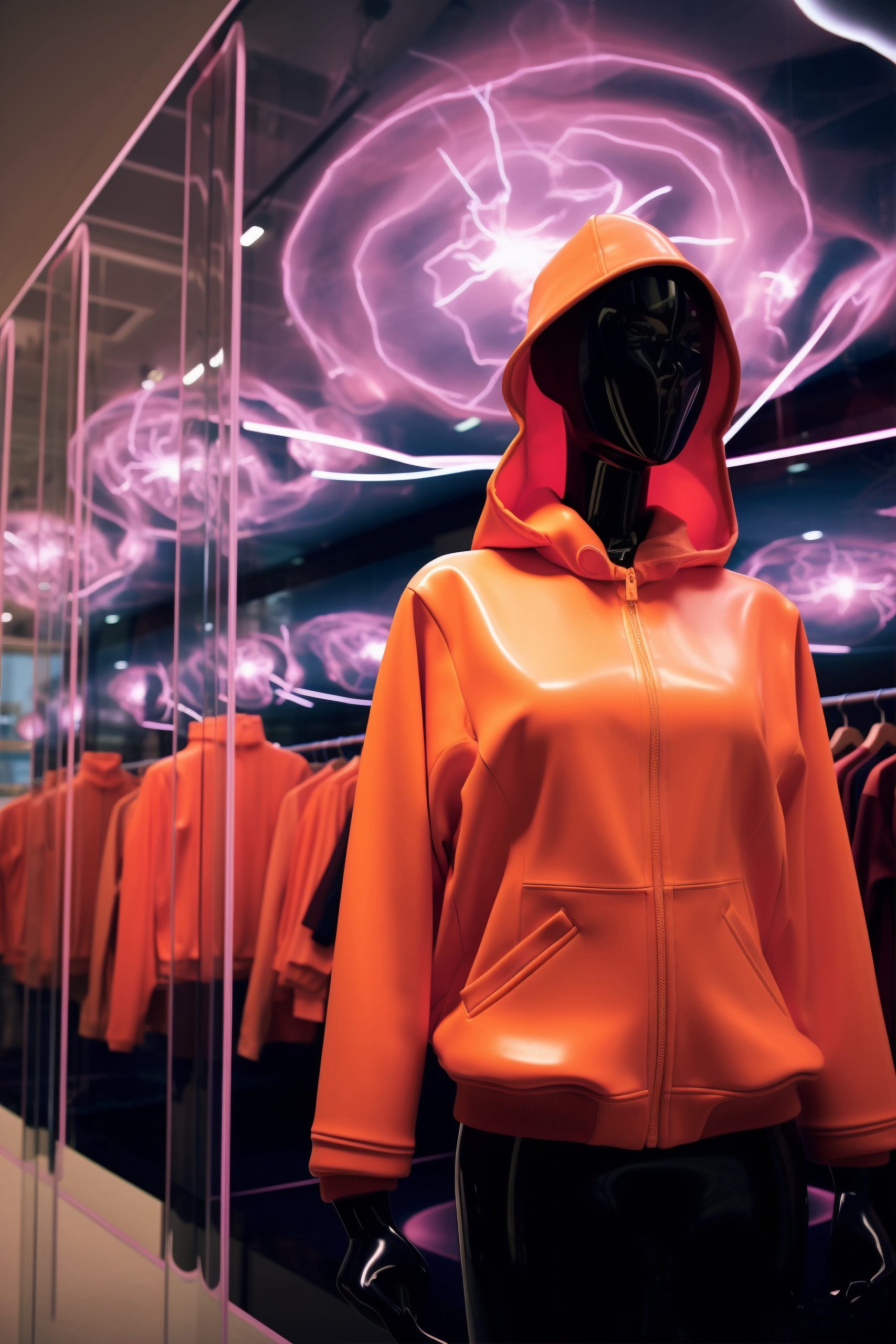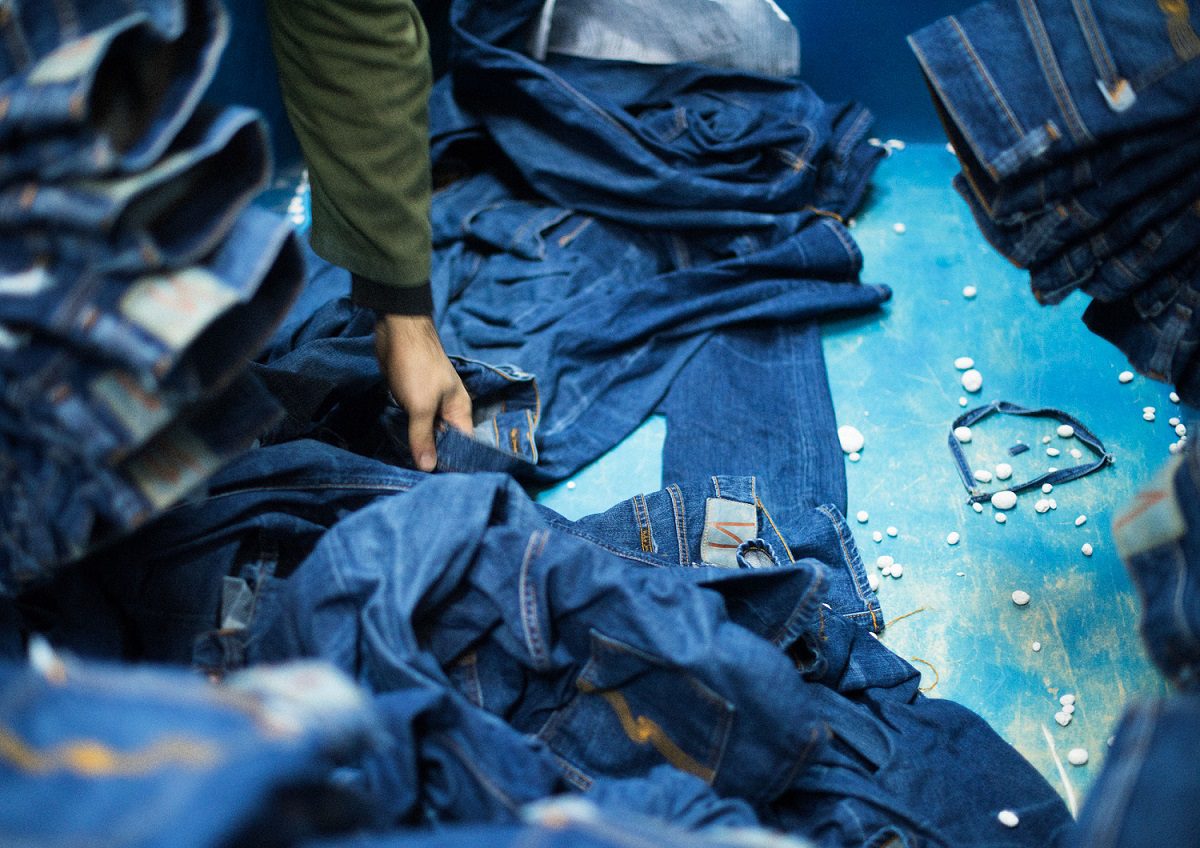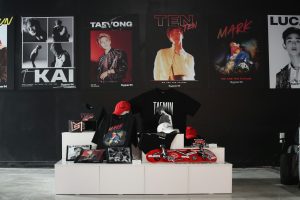Responsible for an estimated 10% global carbon emissions per UN Environment Programme, fashion is one of the largest contributors to environmental degradation. However, it is now embracing machine learning in its production and design processes, and collaborating with tech startups and material science innovators, to address the crisis. For instance, Adidas partners with Speedfactory, a cutting-edge facility that leverages advanced robotics and machine learning to produce sneakers on demand.

Per World Bank, the fashion industry uses 93 billion cubic meters of water annually. The fashion industry is also responsible for over 20% of global water pollution from textile dyeing and finishing processes, per Fashion Revolution. Unsold inventory, defective fabrics, and the high volume of discarded clothing all contribute to this crisis. In response to the growing demand for sustainable practices, fashion brands are adopting innovative solutions to minimize waste. Among the most promising is machine learning, which is revolutionizing the industry’s approach to waste reduction. This article explores how machine learning is helping fashion brands tackle waste and drive significant change.
The Fashion Waste Problem: A Growing Crisis
Per the UN Environment Programme, the fashion industry is the second-biggest consumer of water and is responsible for 10 percent of global carbon emissions — more than all international flights and maritime shipping combined! Unfortunately, these industry problems are often overlooked by consumers.
Fast fashion, with its quick production cycles and disposable culture, amplifies the climate crisis with overconsumption, contributing to the landfill overflow of tonnes of discarded clothes. The production of synthetic fabrics like polyester—derived from fossil fuels—releases micro-plastics into waterways and damages the ecosystem. Dyeing processes alone account for 20 percent of industrial water pollution: a grim reminder of the industry’s environmental footprint.
In response to this growing crisis, many fashion brands are acknowledging their role in climate change and are taking steps toward sustainability. Patagonia and Stella McCartney champion eco-conscious practices, using organic and recycled materials. The Fashion Pact, a coalition of global fashion companies, was launched to reduce the fashion industry’s carbon footprint, pledging to meet targets for reducing greenhouse gas emissions, water use, and textile waste.
However, the fashion industry’s response remains fragmented, with several brands and retailers prioritising profit over sustainability. As the urgency to combat climate change escalates, it is clear that the industry must overhaul its production processes, shift towards a circular economy, and make bolder commitments to eco-friendly practices if it is to play a meaningful role in reducing its environmental impact. The clock is ticking and the need for action has never been more critical. Let’s take a closer look!
Machine Learning: Case Studies from Leading Brands

Machine learning, or the use of algorithms that enable computers to learn from data without being explicitly programmed, can be used for a variety of purposes in fashion, from demand forecasting and inventory management to defect detection in production and end-of-life recycling. By analysing data, machine learning models can identify patterns and predict future trends with remarkable accuracy. This allows fashion brands to make informed decisions, reduce waste, and streamline their operations. For example, machine learning can predict which styles will sell best in specific regions or seasons, enabling companies to produce the right inventory. It can also detect flaws in fabrics during production, reducing discarded materials.
- Smartex: Detecting Defects to Reduce Fabric Waste
Technology company Smartex is using machine learning to detect fabric defects during production. Smartex’s AI-powered cameras and machine learning algorithms can analyse fabric in real-time to identify flaws that would typically go unnoticed until later stages of production. By catching these defects early, the company prevents fabric from being wasted and reduces the need for costly reworks. In collaboration with brands like H&M, Smartex has significantly reduced fabric waste on production lines. The system’s ability to spot defects in real-time means that brands no longer need to scrap entire fabric rolls, saving valuable resources and reducing the environmental impact of production.
- H&M: Demand Forecasting and Inventory Optimisation
Swedish fashion giant H&M is another example of a brand using machine learning to address fashion waste. H&M uses machine learning algorithms to analyse sales data, weather patterns, social media trends, and other variables to predict demand for specific items in different regions. This enables H&M to align production with actual demand, reducing the volume of unsold stock and lowering the amount of clothing that ends up in landfills. In a recent pilot program, H&M reduced unsold inventory by 10%, translating to millions of dollars in cost savings and reduction in textile waste.
- Zara: Real-Time Supply Chain Optimisation
Inditex, the parent company of Zara, has embraced machine learning to optimise its inventory management. Zara uses a combination of predictive analytics and real-time data to adjust its production schedules and stock levels. This approach allows the company to respond to changing consumer preferences and avoid overproduction. By analysing data from its stores and online platforms, Zara’s machine learning algorithms predict which items are likely to sell out and which ones may not perform as well. As a result, Zara produces smaller batches of popular items, reducing overstock and the associated waste. This strategy saves the company money and helps it stay ahead of the competition.
- The Role of AI in Textile Recycling
Machine learning is also making strides in textile recycling, one of the most challenging aspects of fashion waste. Traditionally, textile recycling has been an inefficient process due to the complex nature of fabrics. However, with the help of machine learning, companies accurately sort and process textiles for recycling. A prominent example is the partnership between fashion technology startup, Worn Again Technologies, and global fashion retailer H&M. Worn Again uses machine learning to identify the types of fibres in clothing and separates them for recycling — making it easier to reuse materials and reduce waste.
The Benefits of Machine Learning in Reducing Fashion Waste
Machine learning offers several significant benefits to fashion, from sustainability and business perspectives:
- Waste Reduction: By improving demand forecasting and production processes, machine learning reduces the unsold inventory and defective products. This leads to less waste at the production and retail levels.
- Cost Savings: Brands can avoid overproduction, which saves raw materials and reduces costs related to excess inventory, storage, and markdowns.
- Environmental Impact: Reduced waste leads to a smaller environmental footprint. Less fabric is sent to landfills and fewer resources are required to produce new garments.
- Improved Efficiency: Machine learning enables fashion companies to streamline their supply chains, making them more responsive to trends, reducing lead times, and improving operational efficiency.
- Consumer Trust: As consumers increasingly demand more sustainable practices from brands, those that adopt machine learning and green technologies gain a competitive edge and customer loyalty.
Challenges and Considerations
A major challenge in fashion forecasting lies in ensuring data quality and relevance, as the industry is shaped by changing trends, subtle aesthetic cues, and cultural shifts. Traditional forecasting models, designed for stable, linear patterns, struggle with fashion’s short-lived, seasonal demand, which is further influenced by social media virality. If brands feed outdated data—such as skewed image archives or incomplete style metadata—into machine learning systems, it can result in misleading predictions—leading to overstock, markdowns, and eroded profit margins.
A critical consideration in fashion-oriented machine learning systems is the issue of bias and interpretability. Some tasks, such as visual search and “complete-the-look” recommendations, rely on computer vision and attribute-tagging models. These models can inadvertently reproduce biases related to culture, skin colour, or body type. For example, if an augmented reality tool fails to accurately track darker skin tones, the resulting algorithmic bias may exclude certain customer segments and reinforce harmful stereotypes.
“Brands have come under fire for using creative that is offensive and discriminatory. If your AI has seen that in the data set and thinks it’s acceptable, it will most likely reproduce some of that offensive design”, Ashwini Asokan, CEO of Vue.ai, tells Vogue Business. “This is why there is no ‘one size fits all’ in AI. AI must adapt to your business, your goals, your aspirations as a company.”
Another challenge in deploying machine learning in fashion is the integration across the value chain and the organisational readiness to support it. Machine learning is not just about training models on style images or purchase history; it requires alignment across design, merchandising, supply chain, marketing, and IT systems. For instance, ZARA applied AI-driven analytics in forecasting, stock allocation, and online personalisation, but it was successful once the organisational process was aligned to support these efforts. Without such alignment, machine learning initiatives can become siloed, preventing them from scaling and creating conflicts within systems and data flows.
To leverage machine learning in fashion, companies must invest in data governance, bias mitigation, cross-functional collaboration, and cultural readiness to adapt. Otherwise, these “smart” tools risk reinforcing legacy constraints rather than enabling fashion brands to transcend them.
The Future of Machine Learning in Fashion Waste Reduction

Machine learning and AI will increasingly be used in the fashion industry to drive innovation, reduce waste, and bring the industry closer to its sustainability goals. By improving production processes, enhancing design capabilities, and fostering collaboration with tech startups and material science innovators, the fashion industry will evolve toward a more sustainable future.
Automated Recycling
As technology advances, we can expect more sophisticated applications, such as automated recycling and on-demand production that minimises waste. For example, the Textile Recycling Alliance is working with machine learning to separate different fabrics and fibers in waste materials, ensuring that these can be recycled into high-quality new fabrics. By automating this process, they can scale up recycling operations, reduce manual labour, and reduce textile waste.
Advanced robotics and machine learning
Adidas has invested in Speedfactory, a facility that uses advanced robotics and machine learning to produce sneakers on demand. This production model minimises waste by creating shoes based on real-time customer demand, reducing mass production. Machine learning algorithms optimise the manufacturing process by predicting trends and demand patterns, which ensures that only the required number of products are made, preventing overproduction.
Machine learning to design sustainable garments
Brands will increasingly leverage machine learning to design sustainable garments, using data to create on-trend, recyclable pieces. Fashion for Good promotes sustainable practices in fashion by working with startups that use AI and machine learning to design and produce garments. One example is Reflaunt, which leverages AI to allow fashion brands and consumers to resell pre-loved garments, extending the apparel lifespan and reducing waste. By using AI to assess garment quality and customer preferences, Reflaunt creates a circular system that supports sustainability while maintaining fashion trends.
Machine learning algorithms to analyse customer preferences
Stitch Fix, an online personal styling service, uses machine learning algorithms to analyse customer preferences and predict clothing styles, sizes, and colours. This improves customer satisfaction and minimises waste by ensuring that only the most in-demand pieces are produced. The company’s algorithms improve based on data from user feedback, which allows for more accurate predictions and further reduces the environmental impact of unsold garments.
Collaboration between fashion brands, tech startups, and material science innovators
As machine learning solutions become widespread, greater collaboration will emerge between fashion brands, tech startups, and material science innovators, driving innovation and bringing the industry closer to its sustainability goals. For instance, Pangaia, a materials science company, uses machine learning to develop and produce sustainable textiles like bio-fabricated leather made from natural plant fibers and fungi. The materials are designed to minimize environmental harm and are recyclable. Through these partnerships, the company is able to create on-trend pieces without compromising on sustainability.
Blockchain and AI to ensure transparency in fashion supply chains
Everledger is using blockchain and AI to ensure transparency in fashion supply chains. Their platform helps track the lifecycle of garments, from the sourcing of raw materials to the point of sale. This provides consumers with information about the sustainability of the products they buy and promotes recycled or eco-friendly materials. It also helps fashion brands make data-driven decisions about sustainability, creating a more transparent and responsible fashion industry.
Practical Takeaways for Fashion Professionals
- Start with Data: Assess your data infrastructure to ensure it can support machine learning initiatives. Start small with pilot projects and scale as you see results.
- Partner with Experts: Collaborate with tech firms and startups that specialise in AI for fashion to accelerate your journey toward waste reduction.
- Measure Impact: Set clear sustainability goals (e.g., reducing textile waste by 20% over the next five years) and track progress using ML-enabled tools.
- Machine learning isn’t just a tool for improving operational efficiency—it’s a crucial part of the fashion industry’s path toward a more sustainable future. By adopting ML solutions, fashion brands can significantly reduce waste and set themselves up for success in the green economy.

Jasmeen Dugal is Associate Editor at FashionABC, contributing her insights on fashion, technology, and sustainability. She brings with herself more than two decades of editorial experience, working for national newspapers and luxury magazines in India.
Jasmeen Dugal has worked with exchange4media as a senior writer contributing articles on the country’s advertising and marketing movements, and then with Condenast India as Net Editor where she helmed Vogue India’s official website in terms of design, layout and daily content. Besides this, she is also an entrepreneur running her own luxury portal, Explosivefashion, which highlights the latest in luxury fashion and hospitality.











